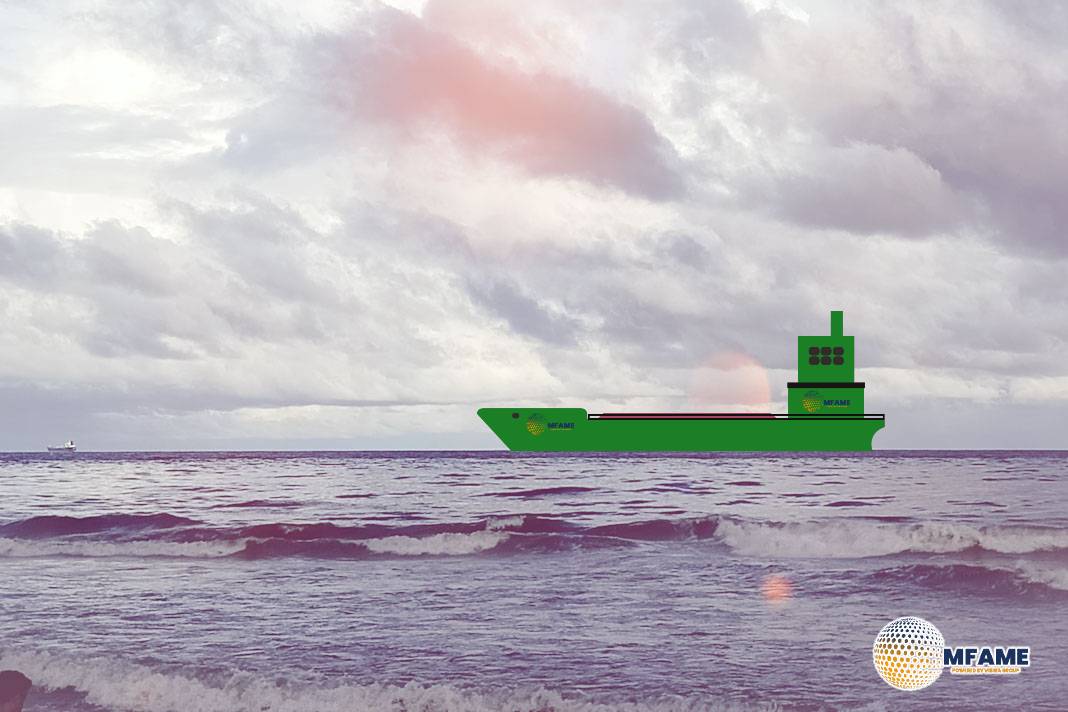The MAIB has been recording incidents involving dangerously weighted heaving lines used in British ports for the last 2 years. While there have fortunately been few cases of injury or damage the risk remains, and is a continuing concern.
The Incident
A bulk carrier under pilotage had one last bend in the river to negotiate before making its f inal approach to the dock entrance. With the remnants of the flood tide behind them, the pilot had timed the arrival perfectly to achieve a maximal under keel clearance (UKC) for passage over the dock sill. Suddenly, and without warning, the bulk carrier lost speed and started juddering. To the pilot and the master it felt like the ship had gone aground; however, with the Electronic Chart Display and Information System (ECDIS) still showing the ship as being only about 35m to starboard of track in a 220m wide channel, and with at least 5m height of tide giving them a large UKC, they were confused as to what could possibly have happened.
The pilot tried to extricate the ship from the apparent grounding by using maximum power astern but, aside from making the ship’s stern pivot around more to port, this had little impact other than to point the bows further towards the new sandbank. The ship’s team sounded their tanks and found no water ingress. With the tide now ebbing, it became clear that the bulk carrier was firmly aground. Having informed all the relevant local authorities and examined towing options it was inevitable that the pilot and ship’s crew would have to wait until the next high tide to free themselves. The pilot stayed on board as a contingency measure during the long wait. At low water it was seen that the sandbank on the inside of the river bend had extended almost 200m further out into the river than it had previously, and that it was this that had caught the bulk carrier unawares.
The harbourmaster sent a team to visually inspect the river at low water and check for other changes that might impact other shipping using the port and dock. No significant changes were noted compared to the last visual river channel inspection 4 days earlier. Unfortunately, the bulk carrier did not manage to free itself at the next high water and had to wait a further 3 days for a high enough tide to lift it clear of the new sandbank. Once afloat the bulk carrier made its entry to harbour for cargo operations and a damage assessment. Despite the length of time aground the ship was undamaged and was cleared to continue operations.
Lessons Learned
- Action → The pilot and master both took appropriate actions once the grounding became apparent. Raising the alarm early, making attempts to pull free of the sandbank and checking tanks quickly all served to warn other ships, assure the cargo and ship’s structural integrity, and reassure all that the situation was under control. Although the bulk carrier was undamaged, the pollution plan was discussed and contingency plans were refreshed. These immediate actions ensured that the right people knew what was happening, what the risks were, and what options were available.
- Risk → At school, many would have been taught about river systems and how they meander through time. Sediment is deposited on the inside of bends and the outside of bends suffer from erosion due to the scouring effect of stronger currents; it is also where the deeper water lies. Charts and sailing directions of river systems regularly give cautions about shifting sands. Hydrographic surveys are only truly correct at the time the data was collected and much can change post-survey. If considering navigating on the inside of river bends then watch out for water disturbances on the surface, follow echo sounder depths closely, and be sensitive to surface water discolorations; all might warn of the risk of shallow patches.
- Monitor → As a result of this incident the harbour authorities plan to install a fixed closed-circuit television camera system to provide a more accurate assessment of the position of the channel and any movement of the bank on the stretch of the river involved. This simple use of technology could prove to be an excellent way of monitoring risks and keeping river users safe.
Did you subscribe to our daily Newsletter?
It’s Free Click here to Subscribe!
Source: MAIB
















